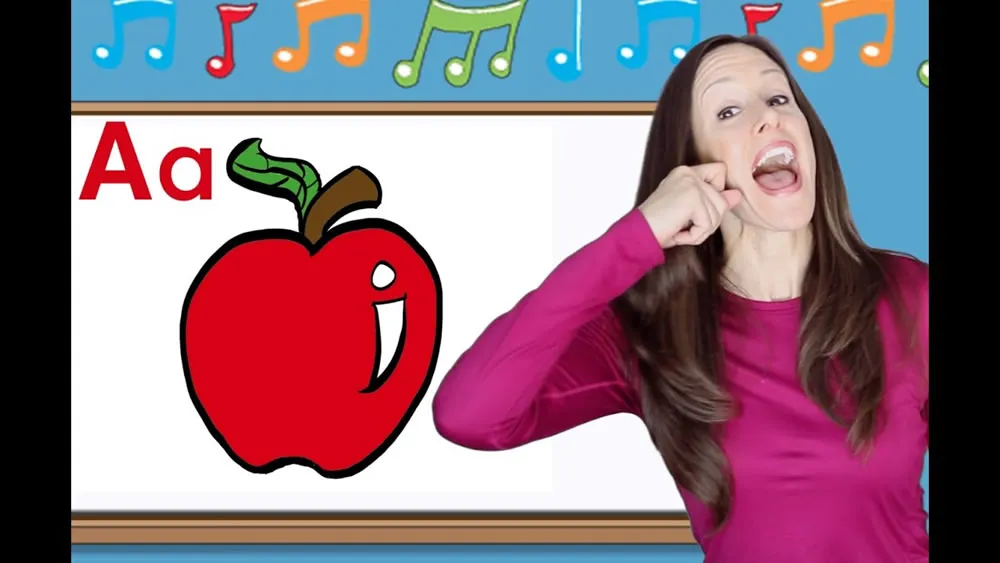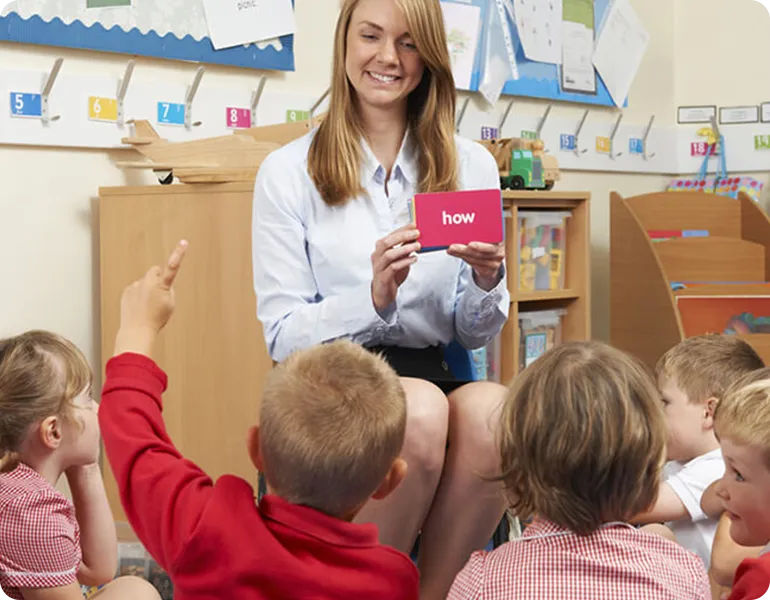Phonics Teacher Training Online

Source: readingeggs
Phonics Teacher Training Online
With the growing recognition of phonics as a fundamental tool in language teaching, the need for specially trained teachers in this field has never been more apparent. Recognizing this need, Vidhyanidhi Education Society (VES) presents the Phonics Teacher Training Online course. This course has been specifically structured to transform educators into specialists, proficient in the techniques of phonics instruction.
By incorporating innovative and practical teaching methods, this Phonics Teacher Training Online course aims to enhance reading, spelling, and pronunciation skills in young learners. Equip yourself with this knowledge and experience the satisfaction of transforming your students’ learning journey in the most impactful way.
Table of Content
- Career Scope For Certified Phonics Teachers
- Benefits Of Doing Phonics Training Courses For Teachers From VES
- Course Content For Phonics Courses For Teachers
- Duration Of Phonics Training Courses For Teachers
- Eligibility For Phonics Training Courses For Teachers
- Phonics Classes In Mumbai
- Why is Phonics Important for Reading?
- What are the 42 Phonics Sounds?
- How to Teach Phonics Step By Step?

Source: shopify
Career Scope For Certified Phonics Teachers
We take joy in acknowledging that our alumni have accomplished great professional feats and personal satisfaction in their roles as phonics instructors and trainers. Many have been placed in renowned state, ICSE, CBSE, and IB schools.
Phonics Teacher Training Online certification from VES has facilitated career growth for existing teachers and motivated many to start successful phonics classes.
After completing our Phonics Teacher Training Online course, the following promising Career Scope For Certified Phonics Teachers can be explored:
- Phonics teacher in distinguished schools across India and overseas.
- Special needs or remedial teacher.
- Opportunities for promotion for in-service teachers.
- Entrepreneurship by starting your phonics classes.
- Role as a phonics trainer at an institution.
- Phonics curriculum designing or content development.
- Parental involvement in your child’s English language development.
- An entirely new career trajectory.
Benefits Of Doing Phonics Training Courses For Teachers From VES
Below mentioned are the Benefits Of Doing Phonics Training Courses For Teachers From VES:
- Clear instructions to start up your phonics classes for little ones.
- A mentor’s guidebook for smooth Phonics Teacher Training Online progression.
- Access to over 300 printable, ready-for-implementation worksheets to ignite your phonics teaching career.
- A series of 42 printable flashcards for visual learning.
- A lexicon consisting of over 650 words with digraphs and different vowel sounds like ai, oa, ay, ow, ei, etc.
- Extra tools for teaching support.
- Recommendations for smoothly running daily lessons.
- A widely accepted certificate on Phonics Teacher Training Online course completion.
Call or Whatsapp at +919869546913 / +9198698 66277 for more details.
For Downloading the brochure click here

Source: cdn
Course Content For Phonics Courses For Teachers
The Course Content For Phonics Courses For Teachers will encompass the following aspects:
- Why Phonics is fundamental to education
- Various Phonics programs
- Comparative analysis of the Whole Language Approach and Phonics
- Using stories, physical movements, and melodies to teach letter sounds
- Mastering the art of letter crafting
- Sound combination techniques for enhancing reading skills
- Sound isolation methods for proficient spelling
- Introduction to initial and final blends
- Learning digraph sounds through interactive storytelling and movements
- Understanding the differences between Digraphs and Blends
- Strategies for tackling complicated words
- Learning the rules that govern Phonics
- Exploring various vowel sounds and their written forms
Duration Of Phonics Training Courses For Teachers
The Duration Of Phonics Training Courses For Teachers covers an 18-hour journey, offering in-depth learning.
Eligibility For Phonics Training Courses For Teachers
Those with an elementary knowledge of English have Eligibility For Phonics Training Courses For Teachers.
Phonics Classes In Mumbai
Our ‘Certificate Program in Phonics Teacher’s Training’ at VES is structured around the renowned Synthetic Phonics Methodology from the UK. We provide an enriched learning environment with both theoretical understanding and hands-on training. We assure you a learning experience that offers value for your time and investment, to mold you into a first-class phonics educator.
Stand-out aspects of Phonics Classes In Mumbai:
- Regular intakes throughout the year
- Economically priced course fee
- Limited batch size for personalized guidance
- Modern, air-conditioned classrooms
- Expert educators
- Provided study kit, presentations, live demonstrations, audio-visual materials, and teaching aids
- Guidance for starting your phonics classes – we assist with all your queries on course pace, center setup, lesson planning, and more.
Surely, you’re ready to start your Phonics Teacher Training Online and In-class journey at VES after going through these aspects!
To apply online call or Whatsapp us @ +919869866277 / +919869546913 for details
For Downloading the brochure click here

Source: ytimg
Why is Phonics Important for Reading?
Phonics is a systematic approach to teaching reading and spelling by correlating sounds with letters or letter groups. It is essential for reading development because it provides foundational skills that help children decode and understand written language.
Here are some reasons explaining Why is Phonics Important for Reading:
Decoding Skills
Phonics instruction teaches children how to associate sounds with letters or letter combinations. This enables them to decode words by sounding them out, which is crucial for reading unfamiliar words. By understanding the relationships between sounds and letters, children can read and pronounce words accurately.
Word Recognition
Phonics helps children develop strong word recognition skills. When they learn the individual sounds of letters and letter combinations, they can quickly identify and recognize words by their phonetic patterns. This allows for more efficient and fluent reading.
Spelling Abilities
Phonics instruction also improves children’s spelling abilities. The Phonics understanding helps children to read and spell accurately and independently. Their phonetic knowledge helps them identify phonemes and graphemes, with which they can form new words.
Vocabulary Expansion
Phonics facilitates vocabulary expansion. When children can decode words independently, they can read a wider range of texts. As they encounter new words, they can use their phonics knowledge to figure out the pronunciation and meaning. This helps them build their vocabulary and comprehension skills.
Reading Comprehension
Phonics lays the foundation for reading comprehension. With this, children focus on understanding the text meaning rather than struggling to decode words. Kids can then interact more deeply with the material, connect the words and draw inferences by reading the given material.
Independence and Confidence
Phonics empowers children to become independent readers. When they can apply phonetic rules to decode and read words on their own, they gain confidence in their reading abilities. This self-assurance encourages them to investigate more difficult materials and cultivate a lifelong love of reading.
Remember, though phonics is essential for teaching reading and spelling to children, it is not the only method to master the English language. Reading a lot of different texts, expanding vocabulary, and using different comprehension strategies are essential elements of being a fabulous reader.
Contact our course coordinator @ +919869866277 / +919869546913 for further details
For Downloading the brochure click here

Source: homepages
What are the 42 Phonics Sounds?
The phonics sounds typically taught in English involve various single-letter sounds and digraphs, which are combinations of two letters representing one sound.
There is not a universally agreed-upon list of the 42 Phonics Sounds, but generally, the following breakdown could be considered:
Single Letter Sounds
- All 26 letters of the English alphabet create a distinct sound:
- a, b, c, d, e, f, g, h, i, j, k, l, m, n, o, p, q, r, s, t, u, v, w, x, y, z
Digraphs and Other Sounds
- These are combinations of two or more letters representing a single sound:
- ch, sh, th, ng, qu, ai, ee, ie, oa, oo, ar, or, ur, ou, oi, er, ay, oy, au, aw, ew, ow, ea, ey, ir, ue, ui, ie, igh, ph, ue, zh
How to Teach Phonics Step By Step?
Children’s reading and spelling abilities can be developed by teaching them phonics.
Here is a method to Teach Phonics Step By Step:
Start with the basics
Before diving into phonics instruction, make sure children have a good understanding of the alphabet and letter names. Review the alphabet and help them recognize and name letters.
Introduce letter sounds
Teach children the individual sounds associated with each letter of the alphabet. Use a multisensory approach by combining visual, auditory, and kinesthetic elements. For example, show them the letter ‘A,’ say its sound (‘/a/’), and have them trace it with their finger.
Teach blending
Once children have a grasp of letter sounds, introduce blending. To create words, separate sounds are blended. Start by using short, three-letter words like “cat” or “dog.” Break down the word into its respective sounds (/k/ /a/ /t/) and have children blend them to form the whole word.
Introduce word families
Word families are groups of words that share the same phonetic pattern, such as the “-at” family (cat, hat, sat). Teach children to recognize and read words within a word family. This helps them see the patterns and generalize their phonics knowledge.
Practice segmenting
Segmenting is the opposite of blending. It involves breaking a word into its respective sounds. Encourage children to identify the sounds in a word and say them aloud. For example, for the word ‘sun,’ they would segment it into /s/ /u/ /n/.
Teach digraphs and blends
Introduce digraphs, which are two letters that make a single sound, such as ‘sh’ or ‘ch.’ Teach children to recognize and pronounce digraphs in words. Similarly, introduce blends, which are two or three consonant sounds that blend, like ‘bl’ or ‘str.’
Use decodable texts
Provide children with decodable books that contain words and patterns they have learned. These books use mostly phonetically regular words, allowing children to practice their phonics skills in the context of reading.
Encourage word building
Use manipulatives like letter tiles or magnetic letters to assist children in building new words. Provide them with a word and have them physically manipulate the letters to create the word. This hands-on approach reinforces the connection between sounds and letters.
Practice regularly
Phonics instruction should be consistent and ongoing. Incorporate phonics activities into daily routines and provide ample practice opportunities. Use games, worksheets, and interactive online resources to make phonics engaging and fun.
Monitor progress
Regularly assess children’s progress to identify areas of strength and areas that need further practice. Adjust your instruction accordingly and provide targeted support as needed.
Remember that every child learns at their own pace, so be patient and provide plenty of positive reinforcement and encouragement throughout the phonics learning process.
Phonics Teacher Training Online
“Boost your profession with Vidhyanidhi’s Phonics Teacher Training Online course.”
Get in touch with our course coordinator @ +919869866277 / +919869546913 for further information
For Downloading the brochure Click Here
FAQs
How to be a Phonics teacher?
Transform into a phonics pro with a teaching certification and specialized training. Let VES's Phonics Teacher Training Programme guide your journey.
What is the best way to teach Phonics?
The best way to teach phonics involves a systematic approach: start with individual letter sounds, blend to form words, then introduce complex sounds.
How to teach blends Phonics?
Teaching blends in phonics involves combining consonants. Begin with two letters like /b/ + /l/ = 'bl' in 'blue', then progress to three-letter blends.
What is Phonics classes?
Phonics classes are structured lessons teaching the correlation of sounds with letters or letter groups, improving reading and spelling skills.




